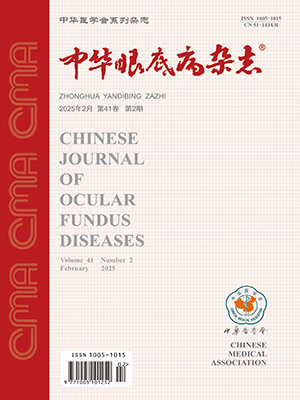Objective To investigate the risk factors and treatment of silicone oil glaucoma (SOG). Methods Ninety-five eyes of 93 patients who underwent pars plana vitrectomy and silicone oil tamponade were evaluated in this study. The lens was removed in 58 eyes in which intraocular lens (IOL) was implanted in 10 eyes, so 48 eyes were aphakic. Silicone oil tamponade time was le;6 months in 32 eyes, and >6 months in 63 eyes. The follow-up time ranged from 2 to 25 months, with a mean of (9.5 plusmn;5.1) months. The fundus and intraocular pressure (IOP) were evaluated at 1 week, 2 weeks and 1 month after surgery. The diagnosis of SOG was established if the onemonth postoperative IOP>21 mm Hg (1 mm Hg=0.133 kPa), and primary and neovascular glaucoma were excluded. After the diagnosis of SOG, carteolol hydrochloride and brinzolamide solution were immediately applied to the eye, and intravenous mannitol infusion was performed. If the IOP still can not be controlled after 1 week of such treatment, silicone oil removal surgery will be performed. If removal of silicone oil can not control the IOP, trabeculectomy surgery will be performed. Results SOG occurred in 21 eyes (22.1%), including 5 phakic eyes (10.6% of 47 phakic eyes) and 16 aphakic eyes (33.3% of 48 aphakic eyes), 3 eyes (9.4% of 32 eyes) with short tamponade time ( le;6 months) and 18 eyes (28.6% of 63 eyes) with long tamponade time (>6 months). The average silicone oil tamponade time was (10.8 plusmn;5.1) months. Emulsification of the silicone oil occurred in 17 eyes (81.0%). After silicone oil removed, IOP was controlled in 17 eyes (81.0%) within one week. Conclusions Aphakic eye and the duration of silicone oil tamponade are the risk factors of SOG. Emulsification of silicone oil is the main cause. Silicone oil removal is an effective way to treat SOG.
Citation: Zhonghong Zhang,Jie LUAN. Clinical observation on secondary glaucoma after silicone oil tamponade. Chinese Journal of Ocular Fundus Diseases, 2011, 27(4): 363-365. doi: Copy
Copyright © the editorial department of Chinese Journal of Ocular Fundus Diseases of West China Medical Publisher. All rights reserved




